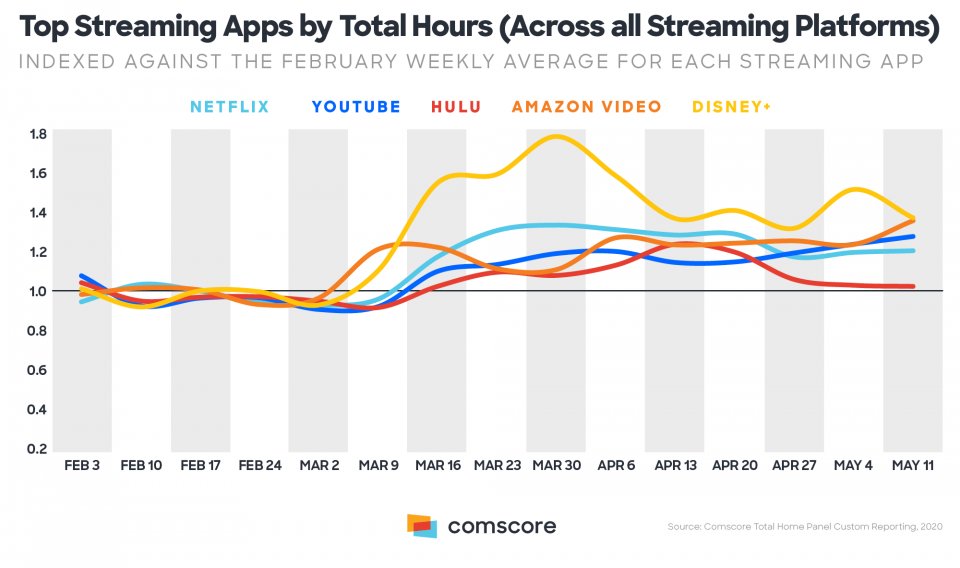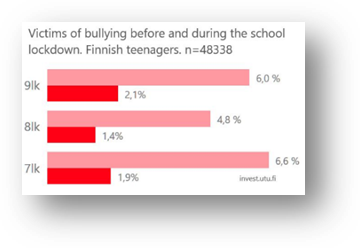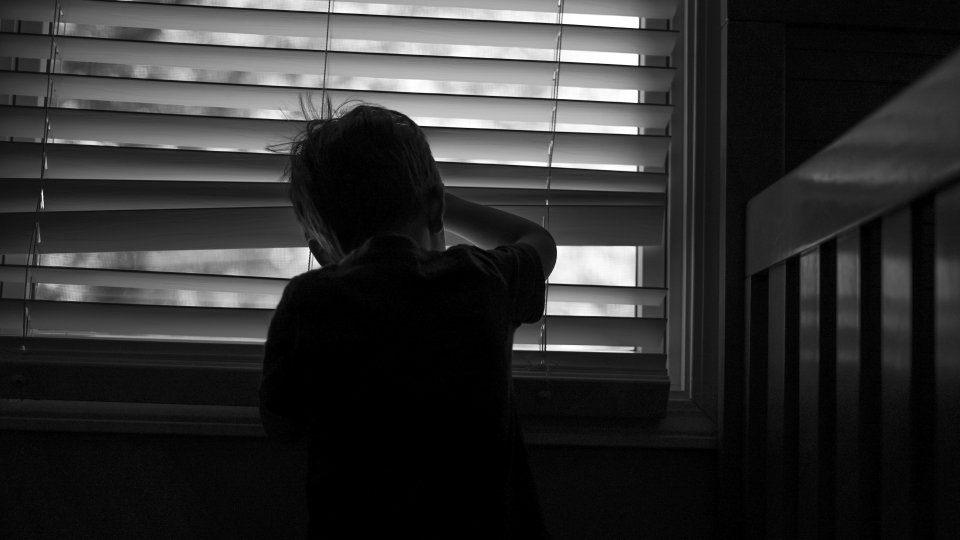Since lockdown began amidst the COVID-19 pandemic, we have looked at the expectations and effects this time has had towards children online. This report breaks down the key findings.
Contents
- Executive Summary
- Introduction
- The COVID-19 Digital Effect
- Expected Impact on Children
- COVID-19: The Effects on children
- Child Exploitation Evidence
- Children’s Health and Wellbeing Evidence
- Evidence of Impact on Children being online
- Evidence of Online Bullying
- Future
- Conclusion
Executive Summary
Covid-19 has affected the lives of billions of people across the world, with unprecedented peacetime restrictions imposed. The reaction has been an extraordinary digital migration; a migration online to maintain some form of normality in terms of social, economic, entertainment and learning.
The increased use of digital infrastructure and services is clear to see right across the sector and resulted in a challenge for providers to meet the heighten demand and maintain access to their services. As Margrethe Vestager, the European Union’s digital chief pointed out “we have had a full-scale crash test of everything digital”.
When it comes to online technology, children are usually early adopters and sadly face threats and harms online. As the global pandemic and associated digital migration intensified, organisations started to highlight the increased risk of harm to children.
The predictions of threats and harms have highlighted a broad range of impacts on children, spanning child sexual exploitation and child sexual abuse material online through the impact of the restrictions and school closures on childrens health and wellbeing.
Whilst helpful to focus the mind and support preventative measures, appreciating the realisation of predictions is important. Whilst still a matter of weeks into the global pandemic, evidence of impact on children has started to emerge, published by organisations and youth groups as they share their experience and data. This is helpful in understanding the emerging impact on children online and compiled in this report
In terms of the early evidence published, this would suggest that
- Whilst many children have access to technology and connectivity, this is not universal and the ‘digital divide’ will have an impact
- In terms of child sexual abuse content online, there has been an increase of individuals searching for child sexual abuse content, alongside an increase in access to adult content online.
- Children have reported heighted anxiety associated with the pandemic and restrictions
- Parents are anxious that their children’s education will be impacted
It is important to continue to consider the impact on children online and appreciate the evidence of impact especially as different phases of the pandemic progresses.
The United Nations Convention on the Rights of the Child defines that children have the right to be safe from violence (Article 19) and the right to education (Article 28)
Introduction
When crisis strikes, it is often children who suffer first and foremost. COVID-19 was declared a global pandemic by the World Health Organisation[i] on 11th March 2020. As the crisis deepened, countries introduced unprecedented restrictions to combat the spread of the virus, meaning that whole populations were placed in lockdown.
In the face of these restrictions, and to maintain some form of normality, most turned to technology and the Internet for work, socialising, entertainment and learning. On April 7 2020, the European Union’s digital chief Margrethe Vestager highlighted that “Digital learning, digital working, digital socialising, everything, and obviously e-commerce has increased substantially[ii].”
The scale in adoption of digital technologies and wholescale migration online has been extraordinary and as Margrethe Vestager pointed out that “amid this crisis, we have had a full-scale crash test of everything digital”.
As the crisis, and digital ‘crash test’ deepened, on 14th April 2020, Unicef, supported by its partners, announced that “Millions of children are at increased risk of harm as their lives move increasingly online during lockdown in the COVID-19 pandemic,”[iii]
What has been the effect on children in this digital migration and have the expected fears been realised?
The COVID-19 Digital Affect
The COVID-19 digital affect was to migrate many physical activities online. This digital migration was first observed by technology and infrastructure providers. In the UK, even before official restrictions were imposed (March 20 2020) BT, reported that “since Tuesday this week, as people started to work from home more extensively, we’ve seen weekday daytime traffic increase 35-60% compared with similar days”[iv]. At the same time (March 19 2020), Kyle Malady, Chief Technology Officer at Verizon in the US reported that “in the first full week of this new American routine and we are certainly starting to see some patterns emerge” with a 22% increase in web traffic[v] (compared to 7 days earlier).
In late March, the digital migration was clear and demand for online content was surging.
In June 2020 research conducted on behalf of the Australian Childhood[i] of a representative sample of 375 parents in Australia concluded that 46% suggested that their children had spent more time by themselves in their room and 71% of children had more screen time than usual during COVID-19 lockdown
In terms of information, the demand for news was clear across the world. For example, Australia witnessed an “average increase of 57% for top ten news sites[vi]”
Google highlighted that “Coronavirus is a huge topic in search interest”, and that these disclose “how different symptoms of the virus are being searched” as well as how this is being seen in countries across the world[vii]
Neilsen concluded that in North Asia
Digitally savvy consumers have also gravitated to apps that meet the needs of their temporary indoor lifestyles, largely in the entertainment and e-commerce categories. While video and gaming apps have topped the entertainment options, consumers have embraced e-commerce for an array of needs: at-home delivery of goods and services, food delivery and online education[viii]
Entertainment content, in particular streaming services saw unprecedented demand. In the US Comscore highlighted this shift to streaming services

In Europe, Netflix announced that it was “Reducing Netflix traffic” by 25% across the board to maintain “member experience”[x]. In April, Netflix noted that it has been “working with ISPs to help increase capacity” and “added four times the normal capacity”.
UAE's Telecommunications Regulatory Authority (TRA) posted figures[xi] highlighting that Netflix saw a “26 percent increase in use during the month of March” within the country.
Appetite for all types of content has grown, including pornography. Pornhub shared the growth in traffic that it experienced in late March of 23.1% across the world[xii] (Europe 24.5%)
Staying in contact with friends and family was clearly important and has driven up social media engagement. Apptopia highlighted that “due to the pandemic, it's clear we still want to stay connected with friends and family. That, plus we just have more time to scroll. Facebook, WhatsApp, Messenger, Instagram, TikTok, Snapchat and Twitter all broke their respective records for time spent in-app, globally, in March 2020[xiii]”
To maintain contact for a variety of purposes, has resulted in the dramatic growth in subscriptions to video conferencing services. Reported by Reuters, Zoom’s CEO Eric Yuan highlighted that the platform’s daily users grew to more than 200 million in March 2020 from a previous maximum total of 10 million (December 2019)[xiv]
Access to technology and connectivity is not however universal. Pew Internet highlighted that, in the US, “low-income homes with children are four times more likely to be without broadband than their middle or upper-income counterparts”[xv]
Expected Impact on Children
With the implementation of restrictions across the world, together with the digital migration, many agencies were quick to point out the potential impact on children. Amongst the first on April 7 2020 was Unicef who highlighted that Children at increased risk of harm online during global COVID-19 pandemic[xvi]. The article detailed the following concerns
Millions of children are at increased risk of harm as their lives move increasingly online during lockdown in the COVID-19 pandemic, UNICEF and partners said today.
''The coronavirus pandemic has led to an unprecedented rise in screen time,” said Global Partnership to End Violence Executive Director Dr. Howard Taylor.
School closures and strict containment measures mean more and more families are relying on technology and digital solutions to keep children learning, entertained and connected to the outside world, but not all children have the necessary knowledge, skills and resources to keep themselves safe online.
''More than 1.5 billion children and young people have been affected by school closures worldwide. Many of these students are now taking classes as well as socializing more online. Spending more time on virtual platforms can leave children vulnerable to online sexual exploitation and grooming, as predators look to exploit the COVID-19 pandemic. A lack of face-to-face contact with friends and partners may lead to heightened risk-taking such as sending sexualized images, while increased and unstructured time online may expose children to potentially harmful and violent content as well as greater risk of cyberbullying.''
Unicef took the opportunity to also include recommendations for Governments, Industry, Schools and parents to mitigate online risks for children.
On April 13 2020, the WeProtect Global Alliance published an intelligence brief[xvii] that included predicted threats to children, specifically
- It is highly probable that numbers of online child sexual exploitation (OCSE) cases will increase during the period of COVID-19 restrictions.
- Greater unsupervised internet use means children are likely to be exposed to greater risk of sexual exploitation online, including sexual coercion, extortion and manipulation by offenders. Exchange of self-generated material is also likely to increase, as children are now experiencing most of their social lives only online.
- The increase in the numbers of emotionally vulnerable children poses greater risk for increased grooming by offenders.
- Isolation due to COVID-19 is likely to increase the probability of offenders acting on their impulses.
- Economic hardship and the inability of offenders to travel due to COVID-19 lockdown is likely to increase the potential for livestreaming abuse in home environments. Livestreaming is also likely to increase due to the higher production of self-generated sexual content by children themselves.
- COVID-19 restrictions are disrupting reporting services, with current systems still reliant on human moderation.
- The current focus within governments and law enforcements on COVID-19, and disruption caused by associated protective measures, are leading to lower prioritisation of online child sexual exploitation in many jurisdictions
As part of their ‘Catching the virus; cybercrime, disinformation and the COVID-19 pandemic’[xviii] report published on April 3 2020, Europol offered the following ‘outlook‘ of threats to children from exploitation;
- Offenders are likely to attempt to take advantage of emotionally vulnerable, isolated children through grooming and sexual coercion and extortion.
- Children allowed greater unsupervised internet access will be increasingly vulnerable to exposure to offenders through online activity such as online gaming, the use of chat groups in apps, phishing attempts via email, unsolicited contact in social media and other means.
- Adults working remotely subsequently are not as able to supervise their children’s internet activity or actively engage with them offline to effectively monitor for signs of stress, isolation and loneliness. Adults working remotely will be more vulnerable to phishing attempts to discover their personal information and that of their family which could then be used by offenders against them and their children.
- Children could be more exposed, through less secure online educational applications, to unwanted attention from adults or identification of their personal information.
- Children may be more inclined towards self-production of CSEM for exchange with peers or to send to others including adults depending on various factors.
On April 4 2020 the UK’s National Crime Agency published its threat assessment[xix] and that “it believes there are a minimum 300,000 individuals in the UK posing a sexual threat to children, either through physical ‘contact’ abuse or online.” Although the report was based on “intelligence pre-dating the coronavirus outbreak - as it and UK policing warn of a spike in online child sex offending during the coronavirus crisis”. The report continued and highlighted that “with children spending more time online to do school work or occupy themselves while parents and carers are busy, they face an increased threat from offenders who are also online in greater numbers”, “urging children, parents and carers to ensure they know how to stay safe on the web”.
“More than 1.5 billion children and young people have been affected by school closures”, concerns and predictions about the impact on children’s education have been voiced.
One such research brief, published by Unicef explores the impact of COVID-19 on education, focuses on the parental role in learning. Parental Engagement in Children’s Learning: Insights for remote learning response during COVID-19[xx] highlighted that
COVID-19 is depriving many children of learning opportunities at school. As the above findings reveal, the availability of child-oriented books at home and the engagement of parents can play an important mitigation role for continued learning, in particular in the most disadvantaged areas where there is no access to technology
Research from Pew Internet explored a similar subject in the US, concluding that Lower-income parents most concerned about their children falling behind amid COVID-19 school closures[xxi], specifically that “two-thirds (64%) [of Parents] express at least some concern about their children falling behind in school, with 28% saying they are very concerned”.
In the UK, a survey published in May 2020 by the University of Exeter disclosed that “Coronavirus has led to major change in attitudes about parental responsibility for children’s education”[xxii]. The survey, jointly designed with the Centre for Education and Youth, was run online to allow parents and teachers around the UK to share their experiences and concerns about school closures. Around 2,200 people took part in the survey during April and highlighted that “almost three quarters of teachers who responded to the survey, 72% said school closures would have a negative impact on pupil wellbeing and safety. The survey extended to parents of children with special educational needs, quoting one parent who said: “My child is autistic and has found the schools closing very difficult. He misses his school, his friends,”
Concerns around children online caused by COVID-19 were voiced from across the world. Her Majesty Queen Silvia of Sweden said in a speech at the ITU’s Digital Cooperation webinar on ‘Online Safety and Security during COVID19’;
“I do want to stress that the heightened risks of online harm for children put a particular responsibility on tech companies and service providers. This is not the time to lessen the priority on children’s safety,”
“COVID-19 has changed the way we live. It has forced many of us to make difficult sacrifices in our personal lives. But it has also given us an opportunity to reflect and focus on what is genuinely important for us. It gives me hope to see that in the past months, the safety of children has been highlighted”
“We also hear worrying reports about more intense activity on darknet communities for abusers, an increase in grooming attempts and a sharp rise in calls to child helplines.”
“I do want to stress that the heightened risks of online harm for children put a particular responsibility on tech-companies and service providers. This is not the time to lessen the priority on children’s safety. On the contrary, this is the time to do everything in our power to keep children safe online.”
“The virus knows no borders. And online perpetrators respect no borders. Therefore, we need to work together across borders.”
COVID-19: The Effects on children
Whilst helpful to appreciate the expected impact on children (especially in the initial phases of the pandemic that resulted in national restrictions and the consequential digital migration) it is now time to start assessing the evidence of actual impact.
Child Exploitation Evidence
Included within Europol’s ‘Catching the virus; cybercrime, disinformation and the COVID-19 pandemic’[xxiii] report published on April 3 2020, was a summary of indicators from European law enforcement authorities with regards to child sexual exploitation, specifically
- The number of referrals from NCMEC/NCECC (NCMEC – National Center for Missing and Exploited Children (USA), NCECC – National Child Exploitation Crime Centre (CA).)
There does not appear to be a significant increase in the number of referrals. However, this may be due to decreased manual moderation of platforms because of teleworking, latency in the reporting period, and the use of automatic systems to detect content online rather than a decrease in availability of CSEM.
- Information from national law enforcement authorities on the number of searches being carried out online for CSEM
Countries have reported an increase in the number of attempts to access illegal websites featuring CSEM blocked in their filters.
3. The number of reports from the public to law enforcement or other institutions (hotlines)
Spain has noted a significant increase in the number of complaints submitted by the public about CSEM online since the beginning of March 2020. From February to March 2020, there was an increase of 100 complaints compared to the previous month. Over more than three years, the number of monthly reports was higher on only two previous occasions. Denmark has reported an increase in the number of attempts to access illegal websites featuring CSEM. The growth, from 18 sites searched to 55, represents a three-fold increase from one week to another. This is an indication of increased online offender activity or at least demand for CSEM online.
- The nature or volume of new posts on online forums dedicated to child sexual exploitation compared to established baselines
Isolated and ‘bored’ offenders are stating their increasing interest in image trading. In some countries, there has been an increase in adult offenders attempting to initiate contact with children via social media.
- Conversations between criminals on forums
Discussions about the COVID-19 pandemic are already appearing on child sexual exploitation boards on the dark web. Users there indicate their anticipation that children are going to be spending an increased amount of time online, with references made to the Omegle application. Other users indicate they will have more time to download available material
- Number of detected connections from which CSEM has been downloaded over peer-to-peer file-sharing networks
Spain, for example, has reported a 25% increase between the weeks commencing 17 March and 24 March. Other countries have also reported similar trends.
Commenting on the situation, Europol director Catherine De Bolle told a hearing in the EU Parliament
What is most worrying is the increased online activity by those seeking child sexual abuse material
In addition to the predictions included in the WeProtect Global Alliance published an intelligence brief[xxiv] published on April 13 2020, the report included compiled evidence of changes. Recognising that “it is too early to see substantive changes in terms of quantitative data”, the report highlighted that
- Specialist cybersecurity company Web-IQ has revealed that between February 2020 and the end of March 2020 there has been an increase of over 200% in posts on known child sex abuse forums that link to downloadable images and videos hosted on the Clearnet[xxv].
- In India, the India Child Protection Fund (ICPF) has registered a spike in online searches for CSAM since the beginning of lockdown in India, which we assess is an indicator of offenders migrating online[xxvi]
- The National Center for Missing & Exploited Children (NCMEC) has registered a 106% increase in reports of suspected child sexual exploitation - rising from 983,734 reports in March 2019 to 2,027,520 in the very same month in 2020.[xxvii]
- Hotlines and portals are registering an increase in reporting. For instance,
In support of this rise in child sexual abuse material and in Australia, Julie Inman Grant, the Australian eSafety Commissioner, warned of a significant rise in reports of child sexual abuse material under Covid-19 restrictions[xxx]. In an interview to Guardian Australia, she added that ‘child abusers have created and shared an online grooming manual describing ways to manipulate and exploit the increased number of children at home and online during Covid-19’.
Further supporting evidence of online child sexual abuse material came from the IWF in the UK. During a one-month period while the UK was locked down, IWF and its partners blocked at least 8.8 million attempts[xxxi] by UK internet users to access videos and images of children suffering sexual abuse during lockdown.
As part of a report ‘Children’s Experiences With Digital Learning During Covid-19 Period’ published by Telia Company[xxxii] in the Nordics and Baltics about children’s experiences from studying from home, this included feedback as to their online safety. The report asked 7017 (1000 children in each country) 10-18 -year-olds from Denmark, Estonia, Finland, Latvia, Lithuania and Norway and 16-18-year-olds from Sweden and concluded that “around one in ten children state that they have been contacted by an unknown adult while studying from home. This has been more common in the Nordics compared to the Baltics.”
In summary and whilst the evidence relates to a relatively short period of time, it would suggest that there has been an increase in searches for online child sexual abuse material (as well as adult content), although perhaps too early to determine if this has resulted in an increase in the availability of this type of content.
Children’s Health and Wellbeing Evidence
Many child protection specialists are concerned of the impact on children’s mental health and wellbeing as a result of imposed restrictions. Without access to usual support services, children may be confined to situations that are neither safe nor happy.
A number of UK studies have been conducted and published that consider the broader impact of COVID-19 on children’s health and wellbeing.
The Young Minds report Coronavirus: Impact on young people with mental health needs[xxxiii] was a survey with 2,111 young people with a history of mental health needs conducted between Friday 20th March (the day that schools closed to most children) and Wednesday 25th March (when there had been a further tightening of restrictions) in order to establish the impact of the pandemic on their mental health and on their ability access to support.
The report highlights that whilst “51% agreed that it had made their mental health a bit worse, 32% agreed that it had made their mental health much worse”. Just over a quarter “(26%) said that they were no longer able to access mental health support”. The report concluded that “Young people were concerned by school and university closures for many reasons, including Loss of formal or informal pastoral support and Loss of their ‘safe’ place away from difficult or dangerous home environments”
In a similar report by The Prince’s Trust and YouGov, named Young People In Lockdown[xxxiv] found that
43% of young people say their anxiety levels have increased due to the pandemic and a third say they are overwhelmed by feelings of panic and anxiety on a daily basis
In Scotland, The Scottish Youth Parliament, YouthLink Scotland and Young Scot highlighted that “Almost two fifths (39%) stated that they felt moderately or extremely concerned about their own mental wellbeing” in their report LockdownLowdown - what young people in Scotland are thinking about COVID-19[xxxv].
Looking further into anxiety, The University of Sheffield’s Initial research findings on the impact of COVID-19 on the well-being of young people aged 13 to 24 in the UK[xxxvi] (a study of 2002 individuals aged 13-24, conducted between 21 April 2020 and 29 April 2020) found that “Almost 30% of 13-15 year olds enjoyed being at home, and this dropped to around 20-25% in older age groups. Notably, however, as age increased, a greater proportion of people did not enjoy being at home at all (10-15%)”. It also concluded that “Black and mixed race respondents had higher levels of anxiety and depression as measured by HADS, compared to White and Asian respondents”
Studies in other countries have made similar conclusions. Save the Children US national survey of 1,500 households[xxxvii] found that “2 in 3 Parents in the U.S. Worry about Their Child’s Emotional & Mental Wellbeing”. The poll extended to children too and found that “approximately half reported being bored (52%) or worried (49%). One in three reported being scared (34%), and one in four reported being anxious (27%), confused (24%), stressed (23%) and/or unhappy (22%)”
A JRC science report for the European Commission[i] summarised how families in 11 European countries handled emergency remote schooling during the Covid-19 lockdown in spring 2020. The findings showed that on average, children across all participating countries reported spending about half of their online time on digital learning activities. It also shed light on the level of worries that both children and parents have due to the pandemic and classroom closure as well as there was a high demand for guidelines by parents on how to support children with distance education activities and homework.
A study of over 1,000 educators in the UK by NACCE [ii]and published in December 2020, provides insight into how UK schools are feeling about the role of edtech and the impact of COVID-19 on wider education. It concluded that 75% of educators lacked confidence in safeguarding during the pandemic.
Evidence of Impact on Children being online
A number of UK studies encompassed the extent to which children have been online and what the impact was, particularly on their mental health and wellbeing.
A survey of 9,913 14-25 year olds conducted by the Duke of Edinburgh Award programme in April 2020 titled The impact of lockdown on young people[xxxviii] found that “83% are spending more time in front of a screen” and “71% are concerned it will impact their academic knowledge and skills
Early findings on the impact of Covid-19 on girls and young women[xxxix] was a research briefing published by Girlguiding that surveyed a total of 6,678 girls and young women between 1 to 5 May 2020. The report concluded that “it’s no surprise that girls and young women are spending more time on social media during lockdown, with 85% of girls aged 15 to 18 saying this. Many are keeping connected this way with 78% saying they’ve used new apps and games to communicate with friends and family. But with increased time online, they’re facing increased pressures.
The 15 to 18 age group reported they feel under more pressure to:
- Be productive and share the things they’ve achieved on social media (28%)
- Look a certain way on social media, e.g. lose weight or exercise (26%)
- Be online all the time (20%)
The survey also concluded that “the crisis has increased concern about fake news: 43% of young women aged 15 to 18 feel more worried about fake news and what information they can trust. ‘I think girls are struggling with pressures to use this time to lose weight and get a ‘summer body’.’ Young woman, aged 15 to 18 ‘I hate all the misinformation.’ Young woman, 15 to 18”
On June 3 2020, The World Health Organisation (Europe) published an update - The rise and rise of interpersonal violence – an unintended impact of the COVID-19 response on families[xl]. The bulletin highlighted further evidence of impact on children specifically that “calls to Childline, run by the NSPCC, from children reporting physical or emotional violence have increased 36% and 31% respectively.”
It also illustrated that “officials in Norway, for instance, are even more concerned for children, suspecting that as schools are closed, regular reporting mechanisms and support networks have been disrupted. (These numbers do not necessarily reflect an increase in violence of these proportions, but since these services are often the only options that adults and children have (or perceive to have) during lockdown restrictions, they are an important indicator of what is happening in homes across the Region)”
Evidence of Online Bullying
Over the years there have been many research studies focusing on online bullying. There was a fear amongst many that bullying would rise with the imposed restrictions.

In Australia, the eSafety Commissioner reported on April 26 2020 that they have seen a 40 per cent increase in the number of reports of cyber-bullying,[xli] with 15 per cent of those involving direct threats of harm.
In August 2020, the National Anti-Bullying Research and Resource Centre at Dublin City University in partnership with the Joint Research Centre of the European Commission, in a study of 1,000 parents and children aged between 10-18[i], concluded that despite an increase in technology use, less than a third of children reported to have been victims of cyberbullying during lockdown (28%) and there wasn’t a sharp increase in victimisation. Among those cyberbullied, 39% said this happened more frequently during lockdown than before, 37% said it happened about as frequently as before, while 23% said it happened less frequently than before
A research study by Juuso Repo in Finland of 48,338 teenagers concluded that bullying incidents reduced during lockdown and “for 42%, 'less bullying' was among the positive things in the lockdown”[xlii]
Future
It is clear that COVID-19 will have a lasting impact on children, particularly online and consequentially, policies and plans will need to accommodate this. Already we have seen evidence of this. In Europe, the European Telecom Ministers held a policy debate on June 6 2020 on the EU’s digital priorities in the post COVID-19 era[xliii] and highlighted “The importance of the development of digital skills”
Again in Europe, the European Union is set to unveil a package of measures to better combat child sex abuse after online demand for illegal content involving minors soared during the coronavirus lockdowns. EU Home Affairs Commissioner Ylva Johansson told Germany’s Die Welt daily[xliv] that she ‘wanted to lead “a more efficient fight” through the creation of a new EU centre to help member states “investigate, prevent and combat child sex abuse” and facilitate cross-border information sharing. This would also include closer cooperation with social media companies.’
Speaking in September 2020, the head of the UN World Health Organization (WHO) said, adding that while children may have largely been spared many of the most severe effects, they have suffered in other ways and that more research is needed into factors that increase the risk of severe COVID-19 disease among children and adolescents.
Conclusion
COVID-19 has had a dramatic impact on the lives of billions of children across the world. The digital migration that ensued was nearly universal and, as usual, children were the pioneers. This has only been possible through the availability of digital services and infrastructure and the impact on these is clear to see. Predictably however, this heightened digital use by children comes with associated increased risks and impact, eloquently highlighted by many individuals and agencies.
Whilst some of the predictions of likely impacts on children can be seen in the experience and research evidence, it is perhaps a little too early to understand the total extent of the impact on children.
The evidence would suggest that
- Whilst many have access to technology and connectivity, this is not universal and the ‘digital divide’ will have an impact
- There has been an impact on individuals searching for child sexual abuse content, alongside an increase in access to adult content online.
- Children have heighted anxiety associated with the pandemic and restrictions
- Parents are anxious that their children’s education will be impacted
Policymakers will need to consider and accommodate the impacts of COVID-19 on children for many years to come. There will, without doubt, be a lasting impact on children from COVID-19.
[i] https://www.who.int/dg/speeches/detail/who-director-general-s-opening-remarks-at-the-media-briefing-on-covid-19---11-march-2020
[ii] https://www.euractiv.com/section/digital/news/vestager-its-not-a-choice-between-fighting-the-virus-and-protecting-privacy/
[iii] https://www.unicef.org/press-releases/children-increased-risk-harm-online-during-global-covid-19-pandemic
[iv] https://newsroom.bt.com/the-facts-about-our-network-and-coronavirus/
[v] https://www.verizon.com/about/news/how-americans-are-spending-their-time-temporary-new-normal
[i] https://www.childhood.org.au/covid-impact-welfare-children-parents/
[vi] https://www.nielsen.com/au/en/press-releases/2020/australians-turn-to-digital-news-to-stay-informed/
[vii] https://trends.google.com/trends/story/US_cu_4Rjdh3ABAABMHM_en
[viii] https://www.nielsen.com/apac/en/insights/report/2020/the-impact-of-covid-19-on-media-consumption-across-north-asia/
[ix] https://www.comscore.com/Insights/Blog/How-COVID-19-is-Changing-the-Way-Americans-Engage-With-Streaming-Services
[x] https://media.netflix.com/en/company-blog/reducing-netflix-traffic-where-its-needed
[xi] https://twitter.com/TheUAETRA/status/1262647428752211972
[xii] https://www.pornhub.com/insights/coronavirus-update-may-26
[xiii] https://blog.apptopia.com/top-social-media-apps-broke-records-in-march-2020
[xiv] https://uk.reuters.com/article/us-health-coronavirus-zoom/zoom-pulls-in-more-than-200-million-daily-video-users-during-worldwide-lockdowns-idUKKBN21K1C7
[xv] https://www.pewresearch.org/fact-tank/2015/04/20/the-numbers-behind-the-broadband-homework-gap/
[xvi] https://www.unicef.org/press-releases/children-increased-risk-harm-online-during-global-covid-19-pandemic
[xvii] https://www.weprotect.org/products
[xviii] https://www.europol.europa.eu/sites/default/files/documents/catching_the_virus_cybercrime_disinformation_and_the_covid-19_pandemic_0.pdf
[xix] https://www.nationalcrimeagency.gov.uk/news/onlinesafetyathome
[i] How families handled emergency remote schooling during the time of Covid lockdown in spring 2020 - Publications Office of the EU (europa.eu)
[xx] https://www.unicef-irc.org/publications/1091-parental-engagement-in-childrens-learning.html
[xxi] https://www.pewresearch.org/fact-tank/2020/04/15/lower-income-parents-most-concerned-about-their-children-falling-behind-amid-covid-19-school-closures/
[xxii] https://www.exeter.ac.uk/news/research/title_793916_en.html
[xxiii] https://www.europol.europa.eu/sites/default/files/documents/catching_the_virus_cybercrime_disinformation_and_the_covid-19_pandemic_0.pdf
[xxiv] https://www.weprotect.org/products
[xxv] Online Child Abuse Flourishes As Investigators Struggle With Workload During Pandemic’, accessible at https://www.telegraph.co.uk/global-health/science-and-disease/online-child-exploitation-flourishes-investigators-struggle/ (accessed 28th April 2020).
[xxvi] ‘Report: Demand For Child Sexual Abuse Material In India’ (India Child Protection Fund, April 2020), available at https://www.icpf.org.in/reports (accessed 12th May 2020).
[xxvii] Child Exploitation Complaints Rise 106% To Hit 2 Million In Just One Month: Is COVID-19 To Blame?’, accessible at https://www.forbes.com/sites/thomasbrewster/2020/04/24/child-exploitation-complaints-rise-106-to-hit2-million-in-just-one-month-is-covid-19-to-blame/#6837e89a4c9c (accessed 30th April 2020).
[xxviii] ‘Why Children Are At Risk of Sexual Exploitation During COVID-19’ (ECPAT International, 7 April 2020), accessible at https://www.ecpat.org/news/covid-19-sexual-abuse/ .
[xxix] Child Sexual Abuse Images and Online Exploitation Surge During Pandemic’, accessible at https://www.nbcnews.com/tech/tech-news/child-sexual-abuse-images-online-exploitation-surge-during -pandemic-n1190506 (accessed 28th April 2020).
[xxx] https://www.theguardian.com/society/2020/may/14/child-abuse-predator-handbook-lists-ways-to-target-children-during-coronavirus-lockdown
[xxxi] https://www.iwf.org.uk/news/millions-of-attempts-to-access-child-sexual-abuse-online-during-lockdown
[xxxii] https://www.teliacompany.com/en/sustainability/children-online/childrens-voices/
[xxxiii] https://youngminds.org.uk/media/3708/coronavirus-report_march2020.pdf
[xxxiv] https://www.princes-trust.org.uk/about-the-trust/news-views/young-people-in-lockdown
[xxxv] https://www.youthlinkscotland.org/media/4486/lockdown-lowdown-final-report.pdf
[xxxvi] https://drive.google.com/file/d/1AOc0wCPqv2gfFSQ_DVmw12vrqQK01z0V/view
[xxxvii] https://www.savethechildren.org/us/about-us/media-and-news/2020-press-releases/majority-of-parents-worried-about-childs-emotional-and-mental-well-being-during-covid-19
[xxxviii] https://www.dofe.org/wp-content/uploads/2020/05/DofE-Lockdown-stats-2020-portrait.pdf
[i] https://www.dcu.ie/news/news/2020/08/children-spend-significantly-more-time-online-during-covid-19-lockdown-new-dcu
[xxxix] https://www.girlguiding.org.uk/what-we-do/our-stories-and-news/news/girls-tell-us-how-theyve-been-affected-by-covid-19-crisis/
[xl] http://www.euro.who.int/en/health-topics/disease-prevention/violence-and-injuries/news/news/2020/6/the-rise-and-rise-of-interpersonal-violence-an-unintended-impact-of-the-covid-19-response-on-families
[xli] https://7news.com.au/lifestyle/health-wellbeing/coronavirus-the-surprising-rise-in-cyberbullying-during-social-isolation-c-999773
[xlii] https://app.powerbi.com
[xliii] https://www.consilium.europa.eu/media/44302/presidency-summary-vtc-5-6-3.pdf
[xliv] https://www.euractiv.com/section/digital/news/eu-plans-to-step-up-fight-against-child-sex-abuse-online/






